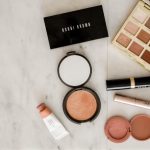Curly hair can be a beautiful accessory, but not everyone is born with bouncy curls. For those who crave curly hair, a perm is the perfect solution. But what is a perm, and how does it work? This blog post will explain the process of chemical perming from beginning to end, and give tips on how to protect your hair afterwards.
Preparing the Hair for a Perm
Before the perming process begins, the hair must be washed and dried thoroughly. Then, the hairdresser applies a protective solution, usually petroleum jelly or a special cream, to the scalp and hairline to prevent any chemical burns from the perm solution. The hair is then sectioned and wrapped around perm rods of various sizes, depending on the desired curl pattern.
Breaking the Disulfide Bonds
Once the hair is wrapped around the perm rods, the next step is to apply the perm solution. This solution contains chemicals, typically ammonium thioglycolate, that break down the hair disulfide bonds. Disulfide bonds are responsible for giving hair its strength and structure, but they can also make hair difficult to curl or style. By breaking the disulfide bonds, the hair can be molded into the desired curl pattern.
Activating the Perm Solution
After the perm solution has been applied, the hairdresser will cover the hair with a plastic cap or wrap to create a moist environment. This allows the perm solution to activate and begin the process of curling the hair.
Depending on the hair’s texture and the desired curl pattern, the solution will be left on for 10 to 20 minutes. The time the perm solution is left on the hair depends on the hair’s texture and thickness. Coarse or curl-resistant hair may require more time for the solution to penetrate the hair shaft, while fine or fragile hair may only need a short time for the perm solution to work effectively. It’s important to follow the instructions carefully to avoid overprocessing or underprocessing the hair. The timing must be just right to achieve the desired curl pattern without damaging the hair.
Rinsing and Neutralizing
Once the hair has been properly processed, the perm rods are removed and the hair is rinsed thoroughly to remove any remaining perm solution. Then, a neutralizer is applied to the hair to stop the perming process and lock in the curl. The neutralizer contains hydrogen peroxide, which rebuilds the disulfide bonds that were broken during the perming process. After a few minutes, the hair is rinsed again and styled as desired.
Protecting Hair After a Perm
After a perm, it’s essential to take good care of the hair to keep it healthy and prevent damage. Here are a few tips to protect hair after a perm:
Avoid washing the hair for at least 48 hours after the perm to allow the disulfide bonds to rebuild fully.
Use a gentle, sulfate-free shampoo and conditioner to avoid stripping the hair of its natural oils.
Avoid using heat styling tools, such as flat irons or curling irons, for at least a week after the perm. Using heat styling tools on permed hair can cause the curls to loosen or fall out, as the hair is still fragile after the perming process and for this reason, it is essential to give the hair time to fully recover before subjecting it to heat.
Use a wide-tooth comb or your fingers to detangle the hair, as brushes can disrupt the curl pattern.
Apply a leave-in conditioner or hair oil to the ends of the hair to keep them moisturized and prevent breakage.
Perming is a chemical process that can give hair a beautiful, curly texture. By breaking down the hair’s chemical structure and resetting it, the hair can be molded into the desired curl pattern. After the perming process, it’s important to take good care of the hair to prevent damage and keep it healthy. By following these tips, you can enjoy your new curly hair without worrying about too much damage.







